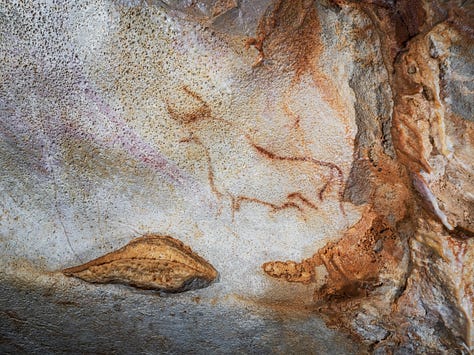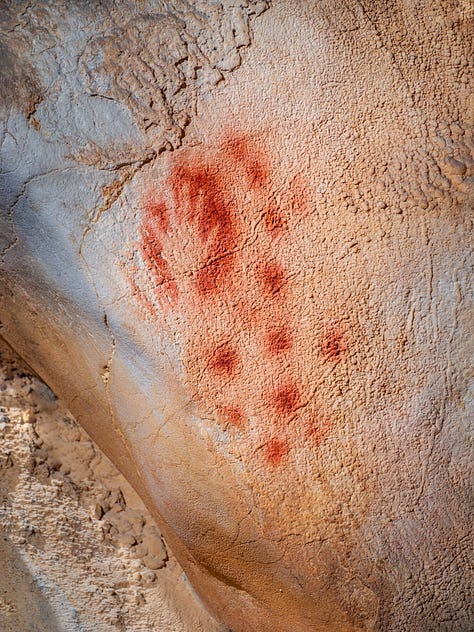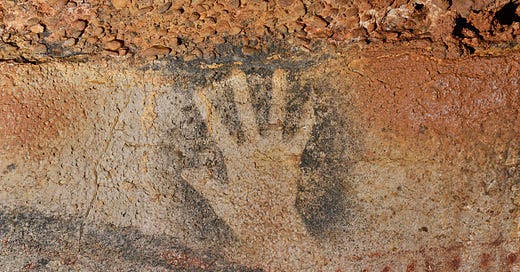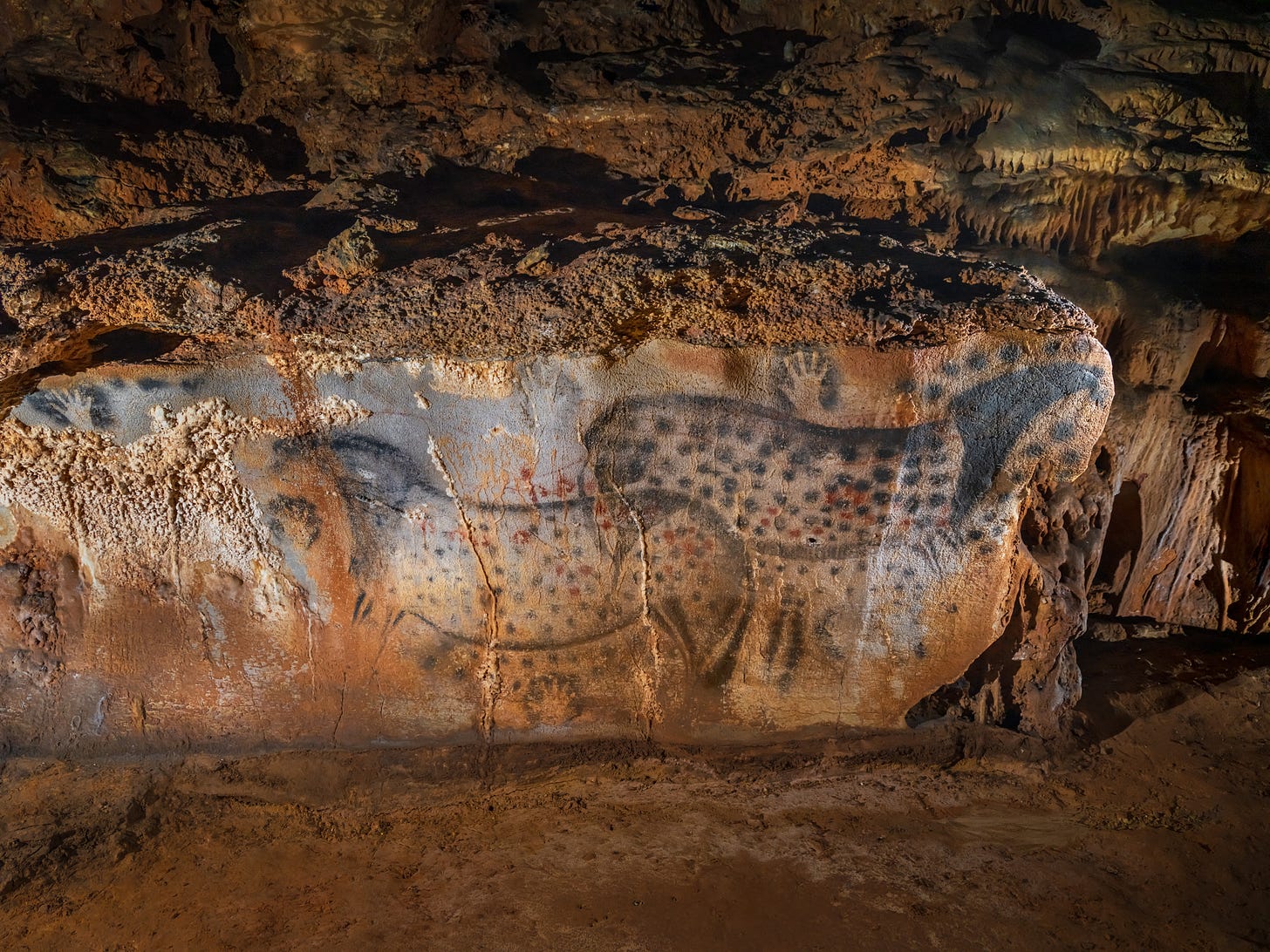Fresh Batch #71: Grotte du Pech Merle à Cabrerets
Prehistoric Art, Appaloosa Horses, Armorica, and America
Could this cave art in France be diffusion between ancient people in America? The claims seem a bit fantastic, but among them is that Pech Merle goes back 25,000 years in human history. There are 70 representations of animals and humans. It was discovered in the 20th century (1922), which makes me suspect fraud. I find it inconceivable that a place such as France, one of the greatest empires the world has ever known, one of the highest populations of Europe, and no one seemed to noticed these caves till the 20th century. At least with the many locations that don’t get discovered till more times (through excavation) we have the excuse that they were buried and built on top of. How could these caves go unnoticed in France?



According to Wiki, Pech Merle is a cave which opens onto a hillside at Cabrerets in the Lot département of the Occitania region in France, about 32 km by road east of Cahors. It is one of the few prehistoric cave painting sites in France that remain open to the general public. Extending over 2 kilometres over two levels, of which only 1,200 m (3,900 ft) are open to the public, are caverns, wells and sloping tunnels, the walls of which are painted with dramatic murals dating from the Gravettian culture (some 25,000 years BC). Some of the paintings and engravings, however, may date from the later Magdalenian era (16,000 years BC).
This cave was created over 2 million years ago by an underground river, cutting channels which were later used by humans for shelter and eventually for mural painting. The galleries are mostly dry, 10 meters wide on average. The height under the vault is between 5 and 10 meters high.
The cave art located in the deeper areas of the cave was discovered in 1922 by Marthe David, age 13; her brother Andre David, age 16 and Henri Dutetre, age 15. The three teenagers had been exploring the cave for two years. Like other children of the area, these three had been encouraged and assisted in their exploration by Father Amedee Lemozi, the curate of Cabrerets and an amateur archaeologist who had discovered other cave paintings in the region.
The walls of seven of the chambers at Pech Merle have fresh, lifelike images of woolly mammoth, spotted horses, single colour horses, bovids, reindeer, handprints, and some humans. Footprints of children, preserved in what was once clay, have been found more than 800 m (2,600 ft) underground. In 2013 the Tracking in Caves-project tested experience based reading of prehistoric footprints by specialised trackers of Ju/'hoansi San with great success (the San people are the Bushmen in Southern Africa). Within a 10 km (6.2 mi) radius of the site are ten other caves with prehistoric art of the Upper Palaeolithic period, but none of these are open to the public.
During the Ice Age the caves were very probably used as places of refuge by prehistoric peoples when the area had an Arctic climate, very cold temperatures, and native animal species very different from those of the present day. It is supposed that, at some point in the past, rain and sliding earth covered the cave entrances with an airtight seal until the 20th century.
There is going to be some wild speculation relating to America and France, which was formerly Armorica. I suspect the real etymology of America pertains to this.

I wrote in The Holy Sailors (click the image), “Aremorica is a word that describes a region by the sea, meaning place in front of the sea. If there be any Truth to Celtic people in America prior to Columbus, especially on account of St. Columba, then it’d be necessary to cover up the Celts as well with the lie that America is named after Amerigo Vespucci. It would also account for the various cultures already here. Pliny listed tribes of Aremorica as the Aedui, Carnuteni, Meldi, Secusiani, Boii, Senones, Aulerci (both the Eburovices and Cenomani), the Parisii, Tricasses, Andicavi, Viducasses, Bodiocasses, Veneti, Coriovelites, Diablinti, Rhedones, Turones, and the Atseui. As the Vikings settled, Armorica became known as Normandy, with its western part becoming Brittany. You will notice the same pattern of w and m interchanging in Latin and in Sanskrit as in the Celtic word vor for sea, the v resembling the Sanskrit w. In Breton, on sea is war vor.”
For those unfamiliar with philology, mor is also a Celtic word for sea, while Latin uses the root mar.
Lhwyd wrote (Pref. to Etymol. p. 267.), “The Armoric Britons do not pretend to be Gauls, but call the neighbouring provinces such, and their language Galek; whereas they term their own Brezonek, (that British,) as indeed it is, being yet almost as intelligible to our Cornish as the language of the illiterate countrymen of the West of England to those of the North.”


Can the breeds of horses be an example of cultural diffusion?
Become a member to access the rest of this article.
Keep reading with a 7-day free trial
Subscribe to Ancient History, Mythology, & Epic Fantasy to keep reading this post and get 7 days of free access to the full post archives.





